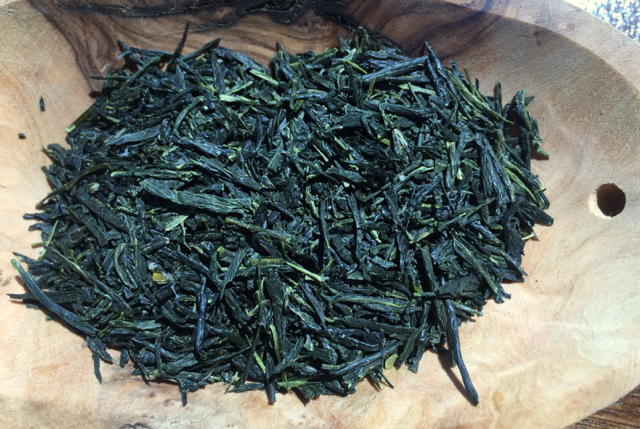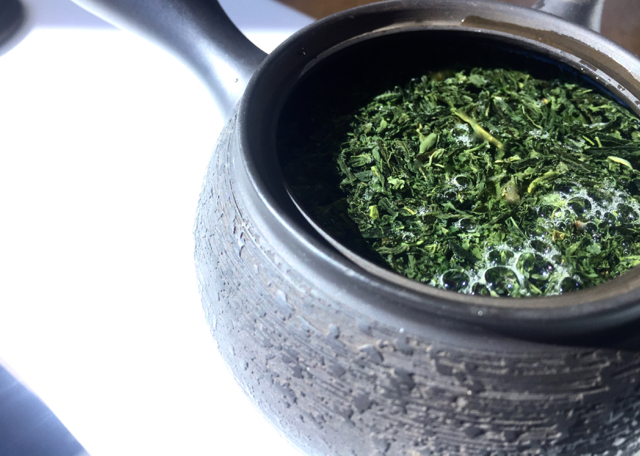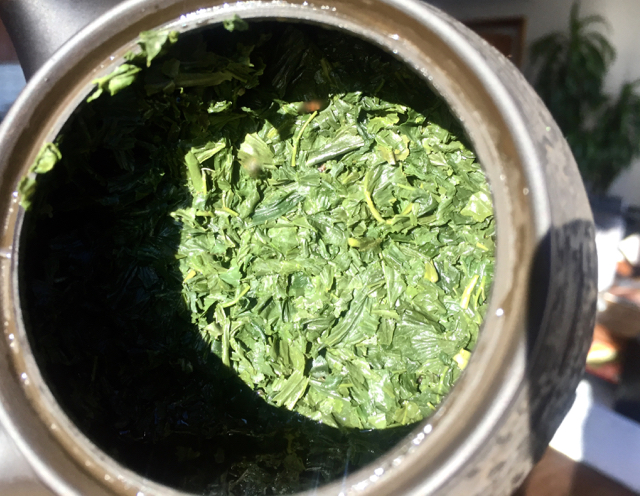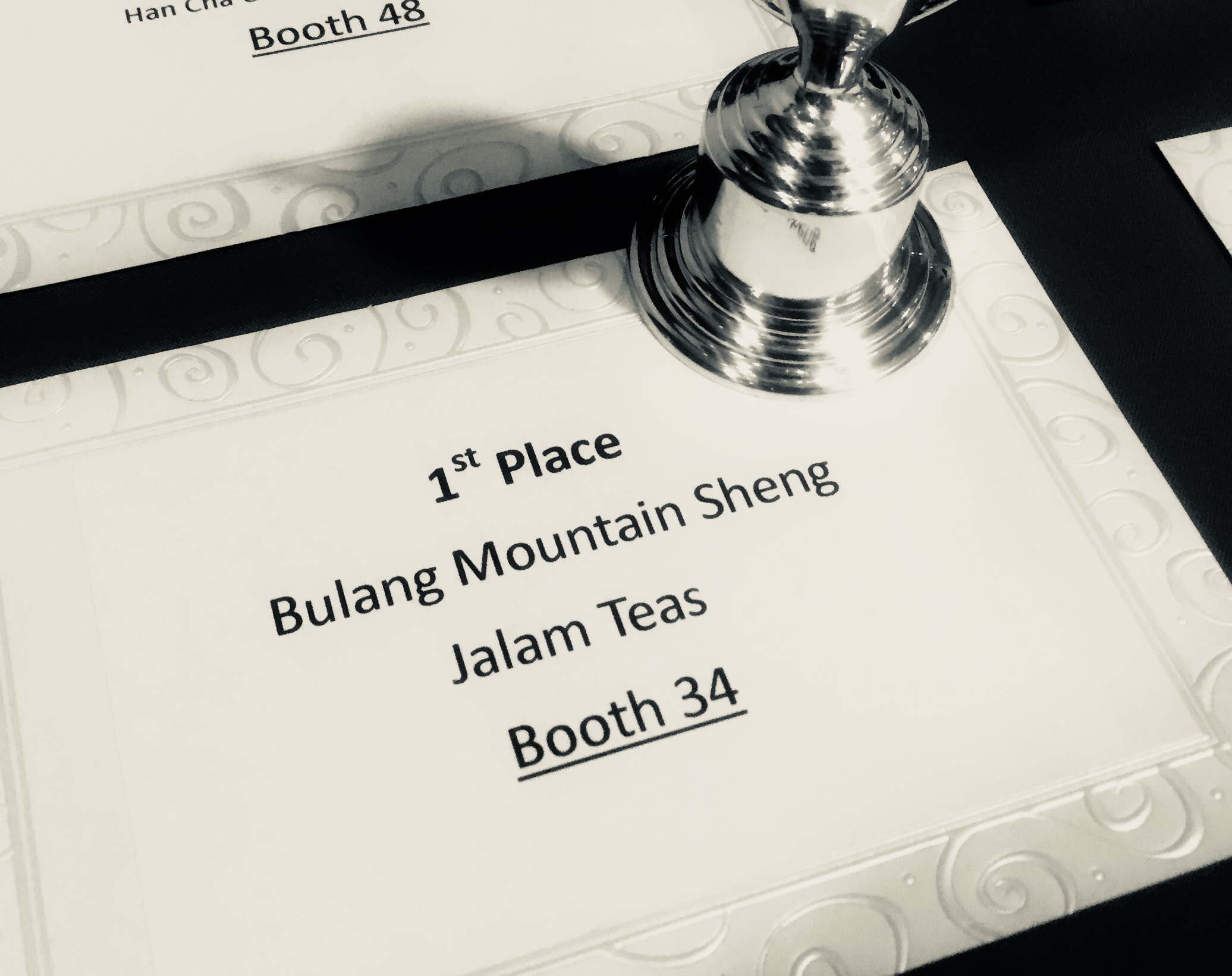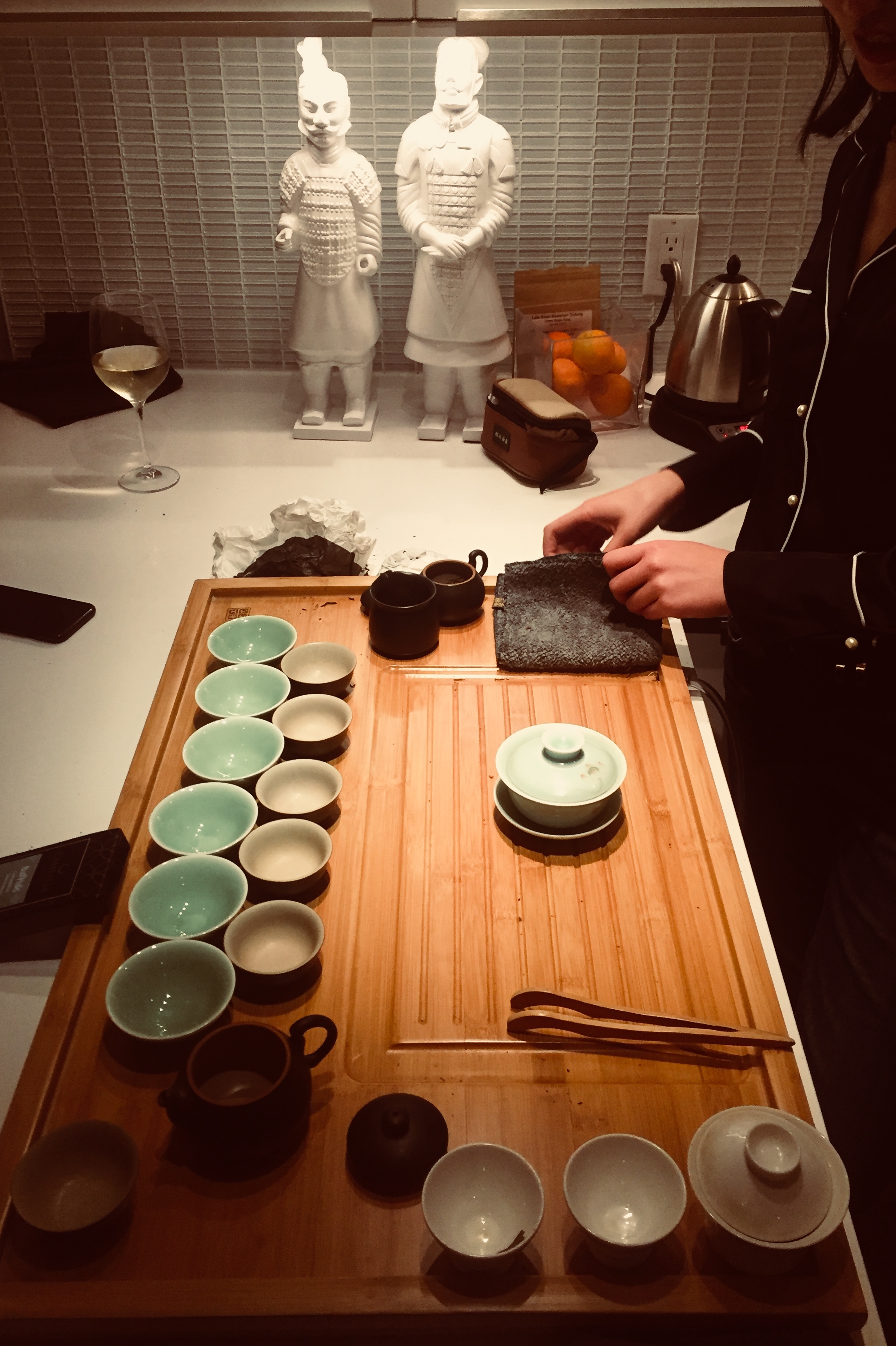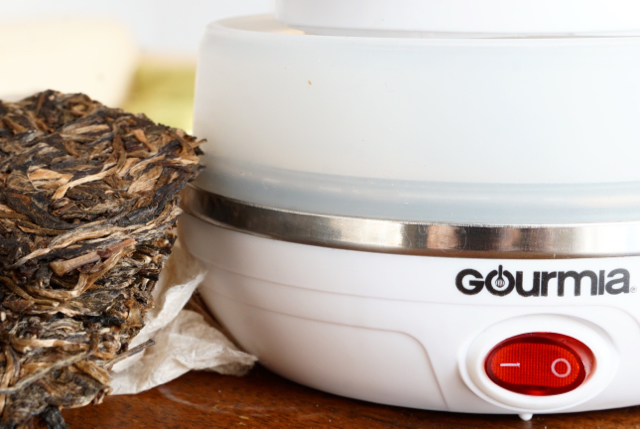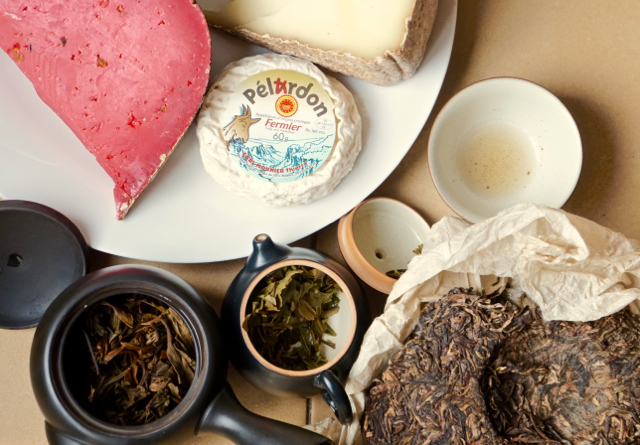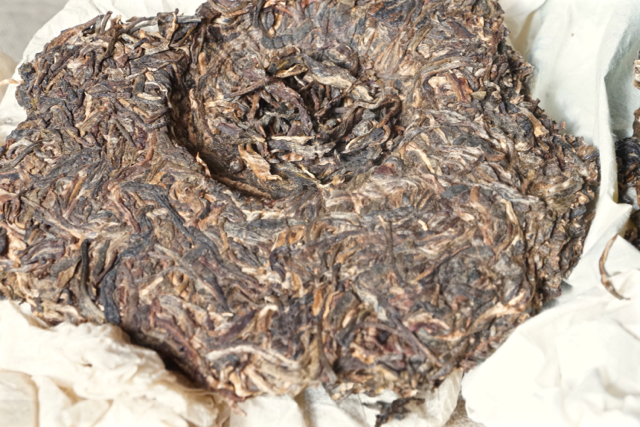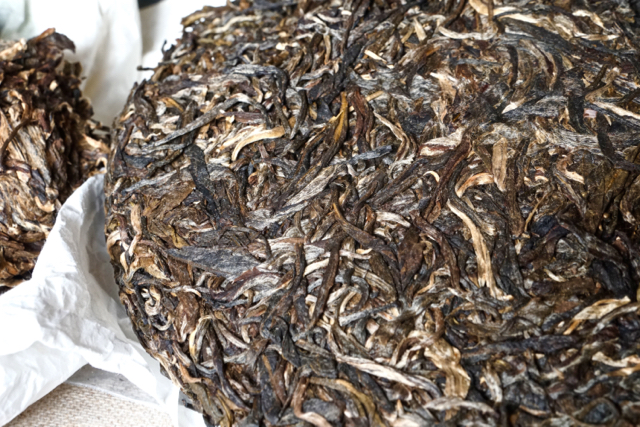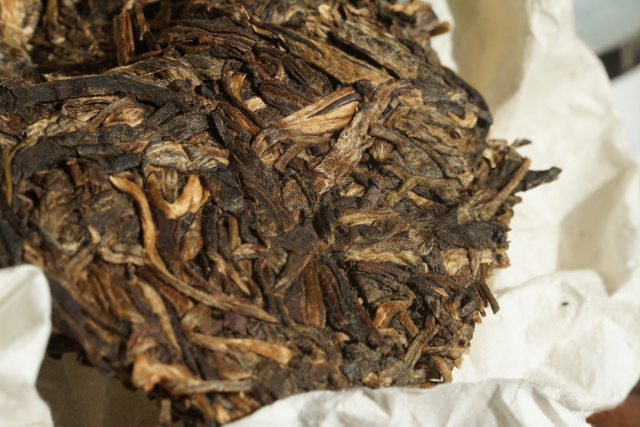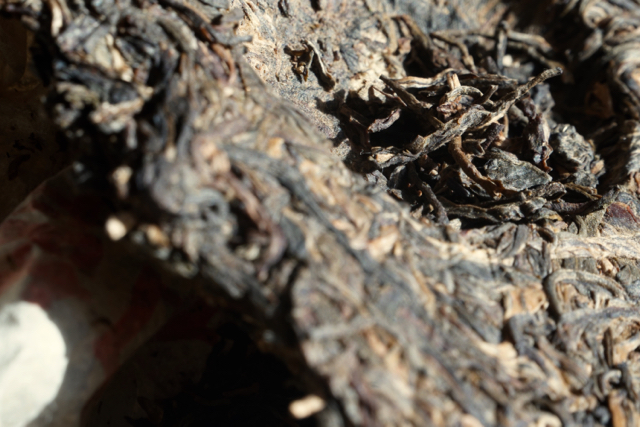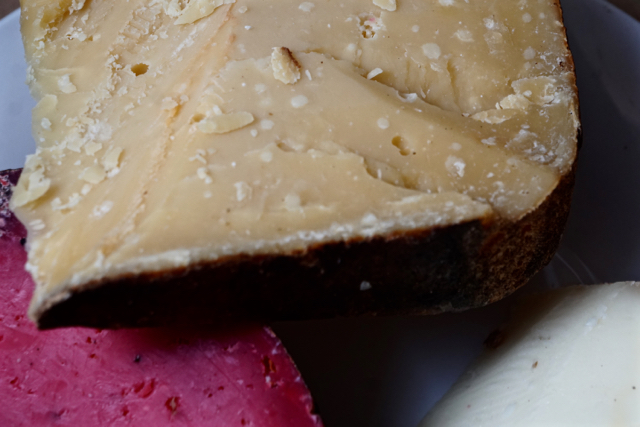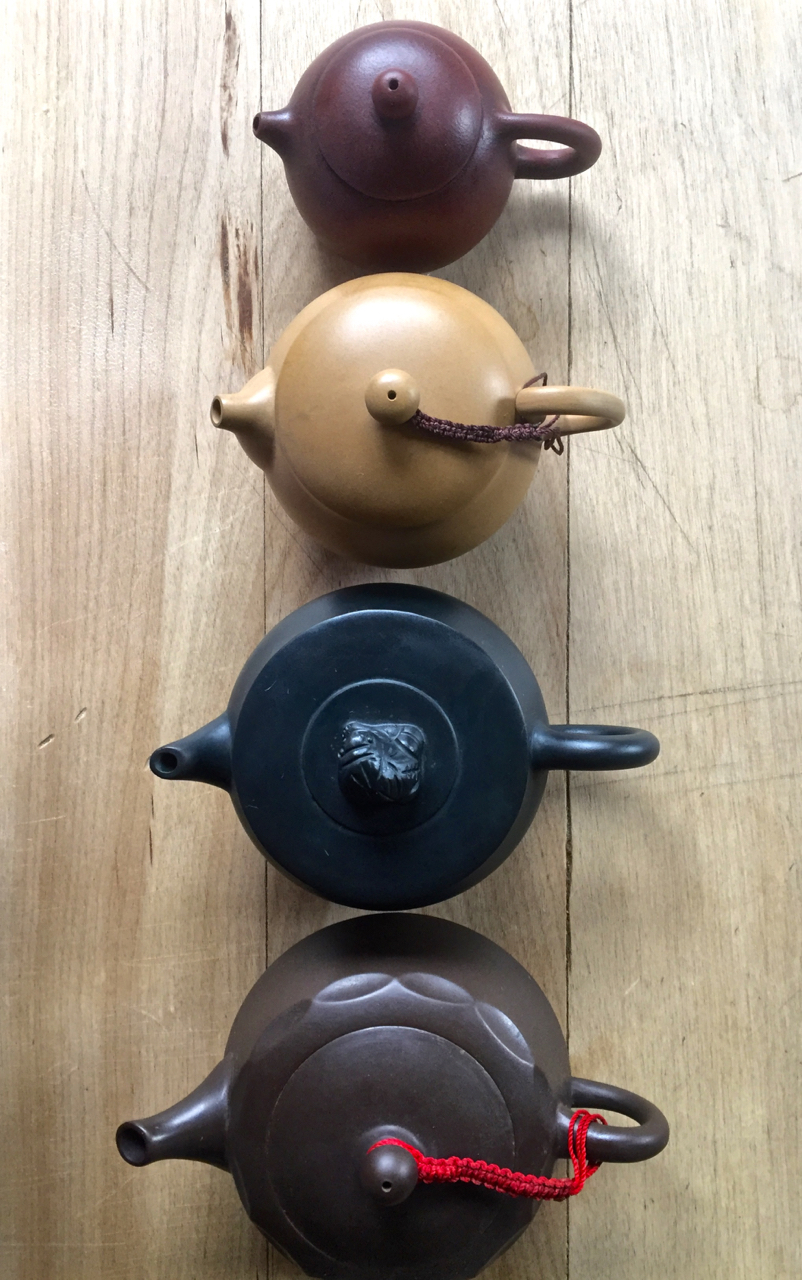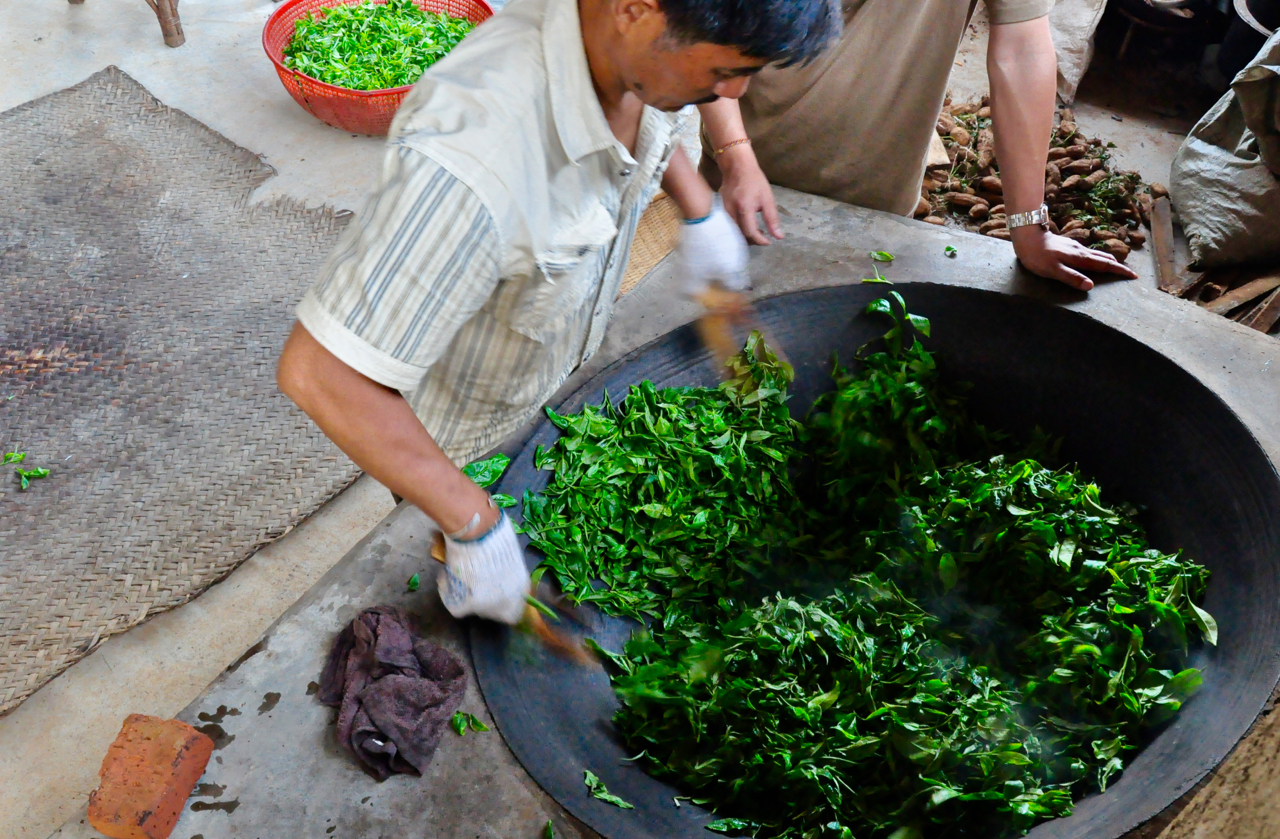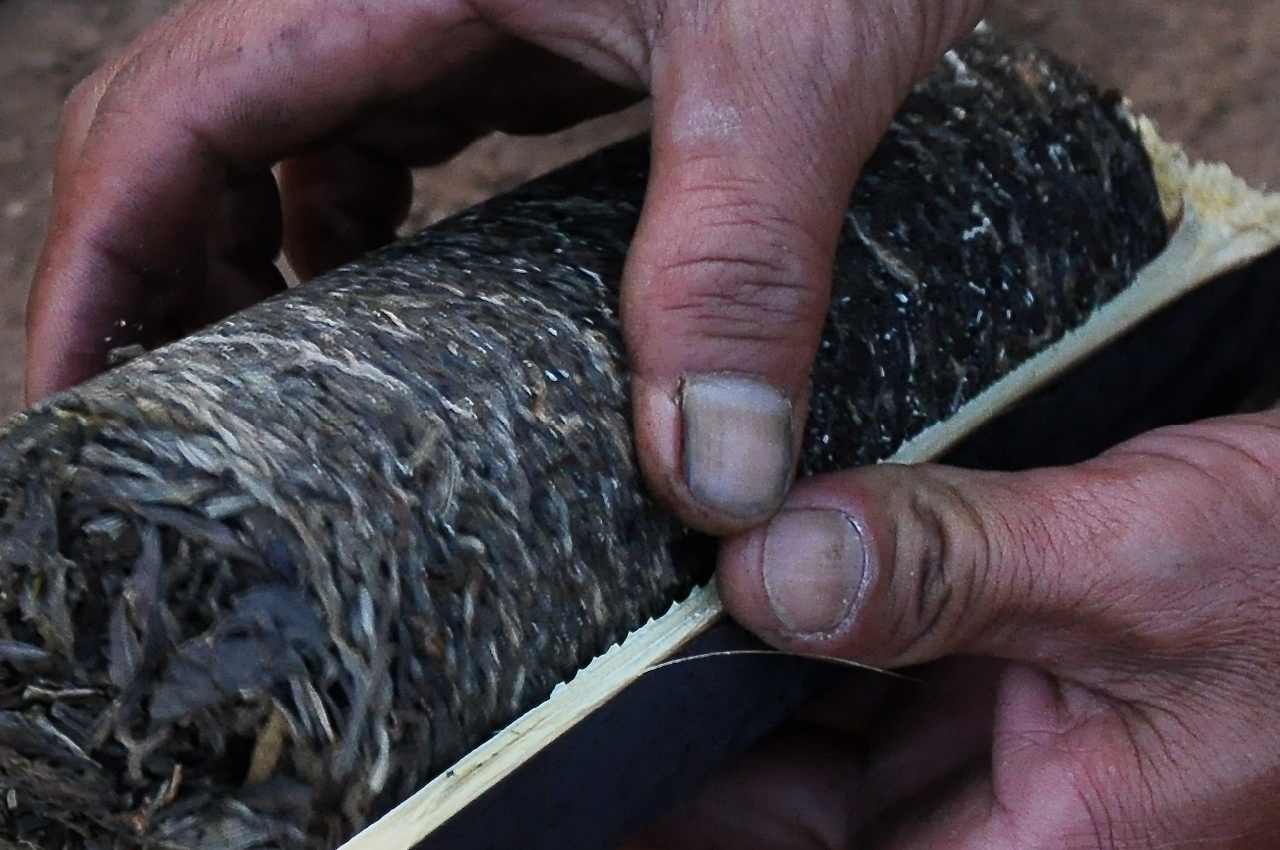
A local with a freshly unveiled ‘tong’ coming out of its bamboo home.
The round cylinder of compressed Puerh, known in southern Yunnan to many as “Zhu tong” pays tribute to an ancient and often forgotten form of Puerh tea. While cakes, balls, discs, bricks and ornately shaped tribute teas – including the melon shaped tribute teas – all circulate and are still largely available but there is another, ancient compressed mold that has largely disappeared from view.
In this cylindrical shape, Puerh was stuffed and bound into bamboo husks and became part of journeys to cultures and landscapes leagues away. While the cylinder form stretches back centuries as one of the prime forms of ‘caravan tea’, it first made its way into my life during time in southern Yunnan’s Xishuangbanna province while looking for old forgotten teas in a Hani household on Bulang Mountain. I was seeking teas that often had been forgotten in old rooms and tucked away in crawl-spaces of elders. I was also there to dig up any stories/memories of teas of the Tea Horse Road. Both stories and rare teas were plentiful on that particular journey and during one conversation with an elderly Hani woman, I spotted a long cylindrical shape peaking out of a rattan basket along with a host of other tea shapes. It was tea compacted into a stunningly simple tube about 15 centimeters long and it, like many of the teas in this home, looked clean and well produced. In this shape, there is an homage payed to the old ways of plant aiding plant; the husk protecting, shaping, and even mildly flavouring its occupants for journeys by foot. There was a time of tea export when such cylinders were common in all sorts of configurations and diameters.

A closer look at my own ageing Zhu tong. The white streaks on the surface are from the inside of the bamboo husk.
The Hani woman made mention that this was the form in which tea traveled by caravans ages ago. In time I would read something from Martha Avery on her notes in her nugget of good reading, ‘The Tea Road’ about the ancient methods of the indigenous Dai people of compressing tea into bamboo husks. More and more the cylinder form appeared and even the odd producer would use the old ways, though the ones that interested inevitably were a little older.

Bamboo, banana leaf, mulberry parchment, and even birch bark all have old associations with tea and its journeys upon the caravans.
I purchased the cylinder along with some other random compressed teas that I dug up at various homes to try. A few cakes wrapped in torn and stained wrap, a brick that was covered in dust, and a small ball that had oxidized on its own into a dark mud colour were all part of my newly collected teas on that journey. Purchasing at the source or direct it likely ensured that it was a ‘pure’ Puerh in terms of its origins. Rather like in the world of Scotch, blends and single origin harvests both have their proponents, but here it was likely that I was getting a tea that reflected a specific geographic zone, soil, and set of conditions. It would reflect a place and time. This whole question of pure vs blended is yet another point of debate in the Puerh world, and in the tea world at large, but the closer to the source one can acquire a tea the more likely the tea is what it is purported to be.
While dedicates of the leaf would be quick to point out that the shape has nothing at all to do with the quality of the tea, the story of facilitating teas’ compression for caravan travel is one that has long had its hooks in me. Anything Puerh and trade related would draw me in and as always, terminology and marketing ploys were put to the side when investigating or peering into tea’s appeal to those who really knew it. Teas that travelled needed compression to protect from becoming dust and bits of desiccated leaves and so seeing the various shapes that tea travelled in was like a little history journey in itself.

Villages like this one near the Shar Gong La Pass in eastern Tibet, lie along the Tea Horse Road and were often the recipients of tea in cylinder form from Yunnan. Later on when more tea began coming from Sichuan, loose bricks became more common than the cylinders, which were and still are, distinctly Yunnan in style
Dried loose ‘mao cha’ leaves get blasted with steam to soften them and make them malleable and it was at this stage that the leaves were ready for whatever manipulative stage their shaper decided. Wrapped in a kind of cheese-cloth after steaming the leaves would shaped by a hand press or stone (though now most is done by machine press) which would conform the leaves to a durable and portable item. It is a piece of simple alchemy whereby many leaves contribute to a single mass body of them. It was the tea that travelled. Cakes or discs, common as they are now, are one of the more recently designed shapes. In days of the great tea caravans, tea was hewn into rough balls, bricks…and the wonderful cylinder.

A more modern version of the ‘bamboo wrap’.
In the tea world, which has become synonymous with fraudsters, hype, clever re-wrapping of generally crap tea and horrendous storage, Puerh still retains a particular association with compressed teas in people’s minds, though any tea can be compressed and ‘worked’ into a mold. Puerhs age better in tight friction-friendly shapes that are compacted just tightly enough to cause a kind of ripple effect of oxidization. The whole ‘age’ of a Puerh (and whether age contributes to a ‘better’ tea) is another question all-together but what is generally accepted is that most collectors prefer to age a tea in a compressed shape, unless the tea is slotted for a relatively quick consumption. Many locals only buy loose tea and view it as “best consumed within 36 month, preferring it fresh with a bit of astringent force. ‘Aged’ tea is still arguably something as much about marketing and resale as it is about an improvement, though this remains a topic which gets many lathered up into a froth. Flavours will (thankfully) always be something relatively subjective and as much as teas’ raw materials and competence of production are vital, so too is the storage situation.
Always (and finally) there comes a time when a tea reminds its handler that its time has come to properly sip and bring the kettle to a boil. The time for the great fusion of leaves and water must inevitably come. Recently I unwrapped the chunk and sat down with water, a cup, and a serving vessel.

A closer look at the striations of bamboo left upon the cylinder surface.
That ‘time’ for the fusion had come as I sat at my father’s home watching snow-flakes saunter down in a diagonal wall in Canada recently. Unwrapping the tea, I drift back, as I often do, to the origins of this pile of leaves and to its own little journey to arrive here.
The cylinder in question is a 2007 Spring harvest from He Kai on Bulang Mountain, which has long been one of my preferred zones to hoard from. Relatively isolated from humans’ – and the chaos that comes with them – the soils, humidity and hands of the region are of the highest quality, though back in 2007 teas were frequently produced ‘casually’ with chicken feathers, dust and debris often finding their way into a production run. The home I sourced the tea from was one of a tea producing family (I only found this out in subsequent visits and years) that consistently put out superb harvests.
From bushes about 50 years old the cylinder was (and remains) a wonderful hodge-podge of leaves (young and old), buds, and stems which all come out . In Some would have blanched at the sight of stems but I cared not. Stems diffuse but they still carried the nutrients that make it to the buds and leaves. The cylinder tea was rough caravan tea and stems and their broken angles belong. Tightly compressed and tidy it needs careful whittling from any entry point one can wedge a tea pick.
Along the exterior of the cylinder, seemingly etched into the surface is the cambium (the inside ‘skin’ layer of the inside of the bamboo husk) which remains as though a testament to the fact that this tea isn’t the ‘neat and tidy’ variety. Each tea in my various tea storage locations has a small little ledger of where and when the tea was purchased, and then a series of ‘sipping dates’ along with simple descriptors of time and place and random information scrapped together. The scrap of stained paper beside this particularly Bada cylinder has notations:
“November 15, 2007 – Hong Kong – smooth, long, bite, vegetal and kicks for hours. Wandering around with thermos of stuff in baking heat”.
The word “vegetal” is underlined as if it was the most important profiling note or at least the most visceral feeling of the tea.
Another squiggled note below has expanded with a little more context:
“May 3, 2008 – Montreal – huge kick, stimulant green and moss???, – needing a stimulant fury to hit…and it does. Sunrise ripped on tea near Old Port”.
The most recent bit of wordy notes on the Bada was a 2013 addition:
“Bad meal cleaned up with some pungent blasts made ripper strong…hard to over-brew the He Kai but malt notes coming through on the enamel. Not tiring of this bundle which continues to give”.

Nomads would take tea in the simplest and most accessible formats, not caring about names and flavour notes, though they did like teas with strength. Yunnan teas for those who remembered them, were preferred.
Descriptions of perceived flavours, gaudy wrappers, and words aside, one of the true tests of a tea is simply the visceral feel of it in the moment that it is taken, and the written notes I have can make an interesting little anthology of a tea and its ‘times’. Words of a tea mentor of mine, Mr. Wang, come back at times like these, “There is a time to stop talking and simplify your tea experience. Just enjoy it and forget the name of the tea”.
Though the above nugget of philosophy is vital, it is worth bearing in mind that this cylinder of joy before me cost was also noted.
80 Rmb, which currently translates into about $15.53 Canadian, 10.22 Euros, or $12.10 US…a deal considering the sips throughout the years; not once ever being the same. The piece initially was close to 1kg, though now it remains perhaps a half of that initial weight.
Gently whittling the tea off, I brew a first infusion and don’t bother to rinse. I prefer instead to enjoy that first rough offering. In this first unwashed infusion is often the heart of tea. The malt tones have only become stronger and longer, though the tea itself has become softer and smoother over time and it has darkened greatly since that last sip in 2013.
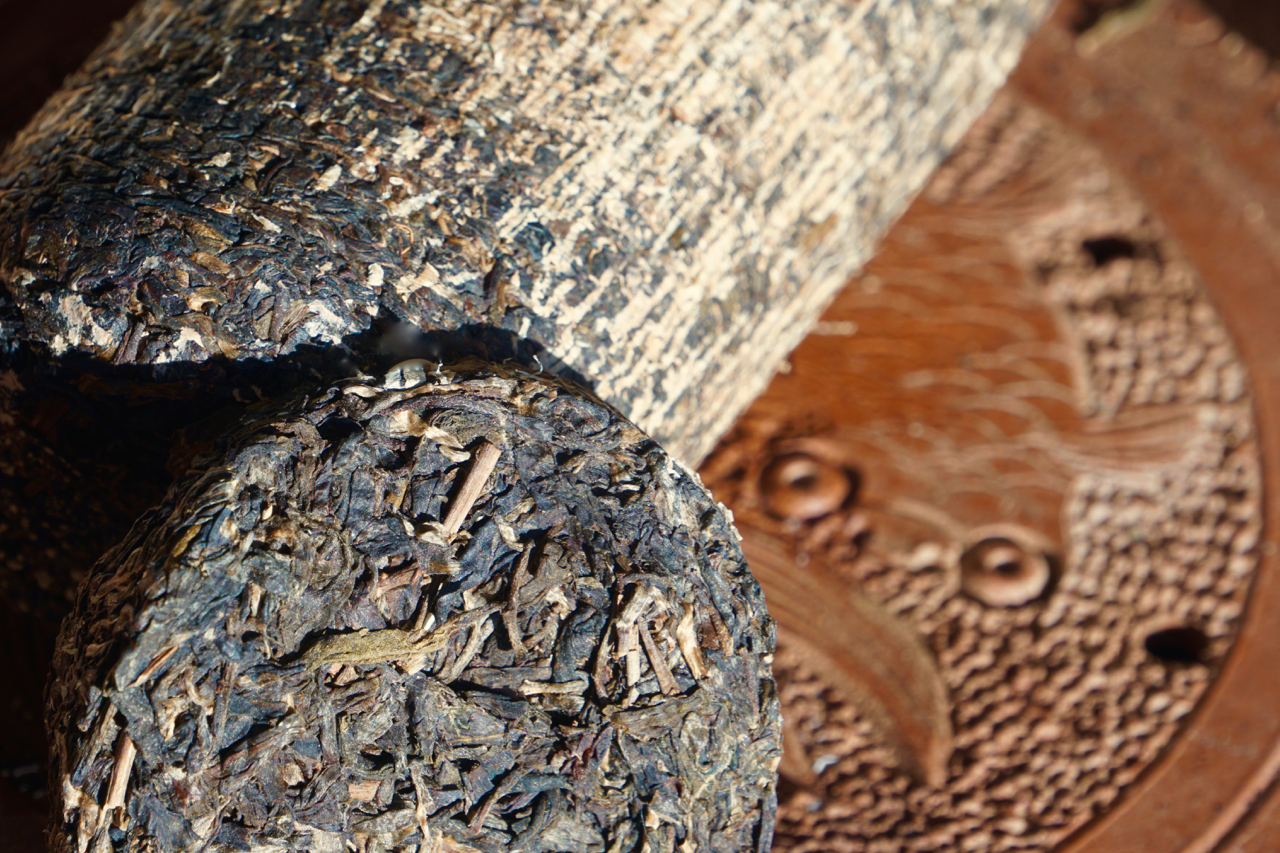
Outside, snow continues to fall and the second and third infusions keep true but start to open up and reveal subtleties and more of a burnt sugar that mixes with the still powerful vegetal hits. The colour is clean and clear as the tea continues to darken with time. An afternoon spent with a bit of snow wandering down and the He Kai acting as provider.








